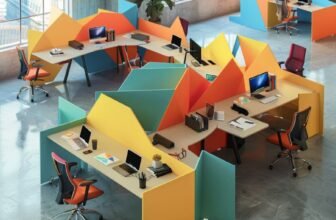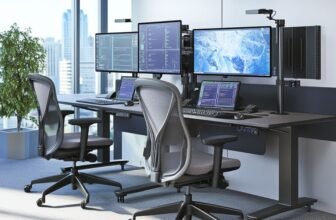
To create a productive work environment with the right office layout, consider the impact of spatial design on employee engagement and efficiency. By strategically organizing the workspace to encourage communication and collaboration, you can foster a culture of innovation and teamwork. But that's just the beginning; optimizing the office layout involves more than just rearranging desks. So, what other key elements play a role in shaping a workspace that cultivates productivity and success?
Importance of Office Layout Design
When designing an office layout, consider how it can enhance productivity and collaboration among employees. The way you arrange workstations, meeting areas, and common spaces can significantly impact how efficiently your team functions. An open layout with designated collaborative spaces can encourage spontaneous interactions and idea-sharing among employees. By placing key departments or teams in close proximity to each other, you can streamline communication and decision-making processes.
Additionally, natural light and ergonomic furniture play a crucial role in creating a comfortable and stimulating work environment. Providing ample lighting and adjustable chairs can help reduce eye strain and physical discomfort, ultimately boosting productivity levels. Consider incorporating elements of biophilic design, such as indoor plants or nature-inspired artwork, to promote a sense of well-being and creativity among your team members.
Ultimately, a thoughtfully designed office layout can foster a culture of teamwork, innovation, and efficiency. By prioritizing both functionality and aesthetics in your workspace, you can create an environment where employees feel motivated and inspired to do their best work.
Factors Influencing Productivity
To enhance productivity in the workplace, consider the impact of factors such as office layout, communication strategies, and employee motivation.
The office layout plays a crucial role in productivity. An open layout promotes collaboration and communication among employees, leading to increased efficiency. On the other hand, private workspaces can enhance focus and concentration for tasks requiring individual attention.
Communication strategies are vital for fostering a productive work environment. Clear and transparent communication channels help in sharing ideas, addressing issues promptly, and creating a cohesive team dynamic.
Employee motivation is another key factor influencing productivity. Recognizing and rewarding employees for their hard work can boost morale and engagement, leading to higher productivity levels. Additionally, providing opportunities for growth and development can increase motivation and commitment to achieving organizational goals.
Implementing Collaborative Spaces
Considering the impact of office layout on productivity, implementing collaborative spaces can further enhance team dynamics and foster creativity in the workplace. By creating designated areas where employees can come together to brainstorm, share ideas, and work on projects collaboratively, you can encourage communication and innovation within your team. Collaborative spaces can range from open-plan work areas with shared desks to informal meeting zones with comfortable seating options. These spaces should be designed to inspire creativity and promote interaction among team members.
When implementing collaborative spaces, ensure that they're easily accessible to all employees and equipped with the necessary tools for effective collaboration, such as whiteboards, projectors, and comfortable furniture. Encouraging employees to use these spaces for group discussions, team meetings, and creative sessions can lead to increased productivity and a stronger sense of unity within the team. Additionally, by fostering a culture of collaboration and teamwork through well-designed collaborative spaces, you can create a work environment that nurtures innovation and boosts overall job satisfaction.
Maximizing Employee Well-being
Maximizing employee well-being in the workplace is essential for fostering a positive and productive work environment. To achieve this, consider incorporating elements that promote physical health, mental wellness, and overall job satisfaction.
Start by ensuring that workspaces are ergonomically designed to reduce the risk of musculoskeletal issues. Encourage regular breaks and movement to prevent fatigue and improve circulation. Natural lighting and access to greenery can also uplift mood and increase productivity.
Supporting mental well-being is equally vital. Create designated quiet areas for focused work and offer spaces for relaxation or meditation. Encourage open communication, provide resources for managing stress, and promote work-life balance through flexible schedules or remote work options.
Show appreciation for your employees' efforts. Recognize achievements, provide opportunities for professional growth, and offer support during challenging times. Foster a culture of inclusivity and respect where individuals feel valued and supported.




